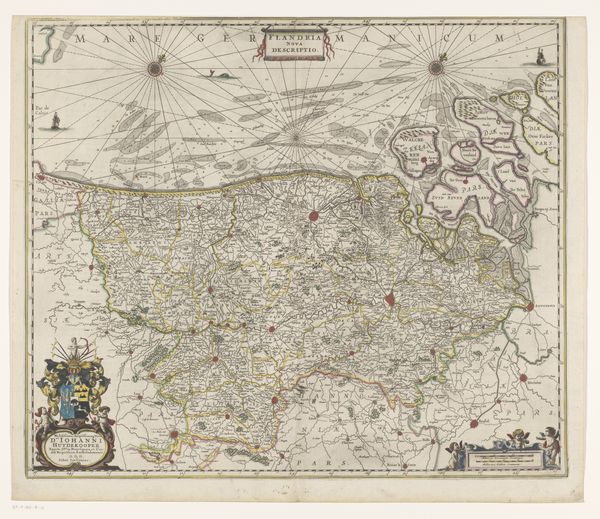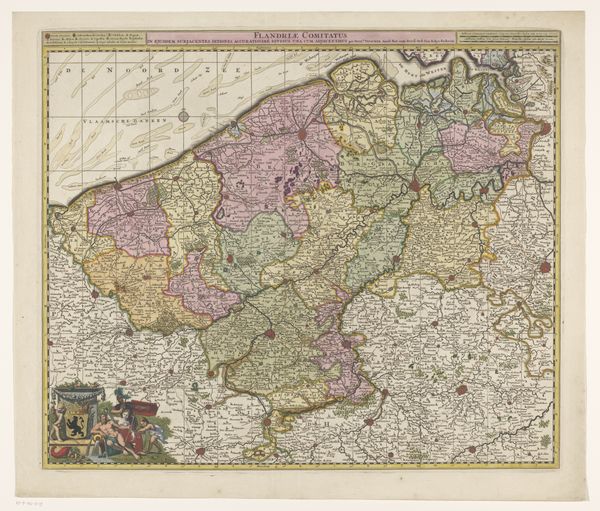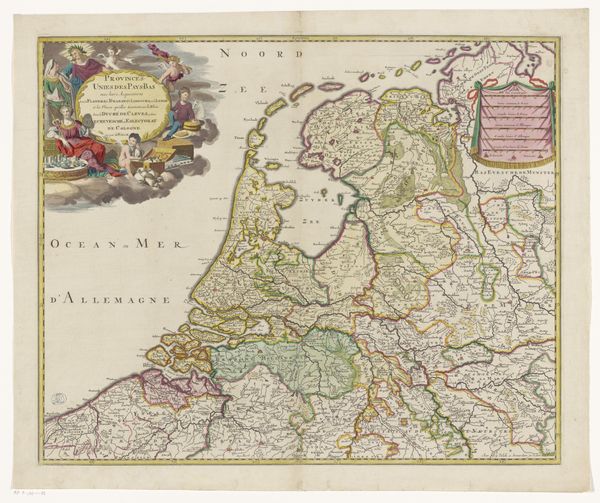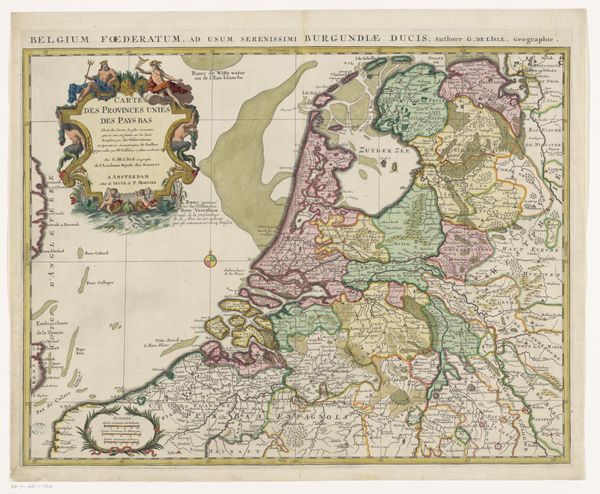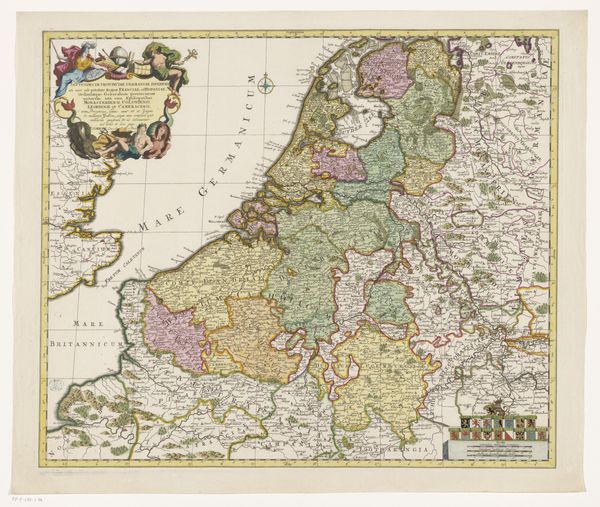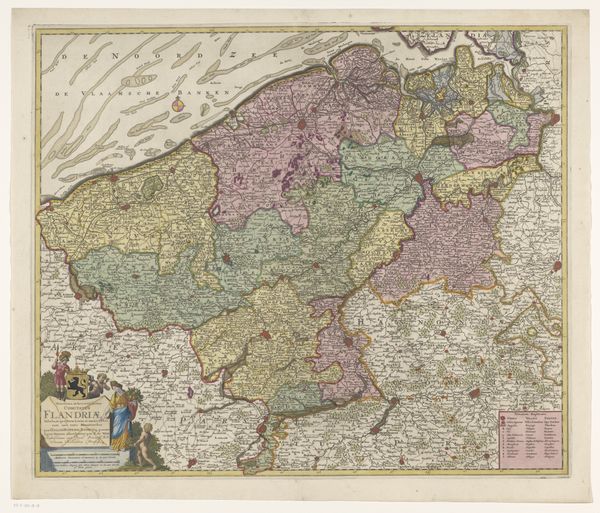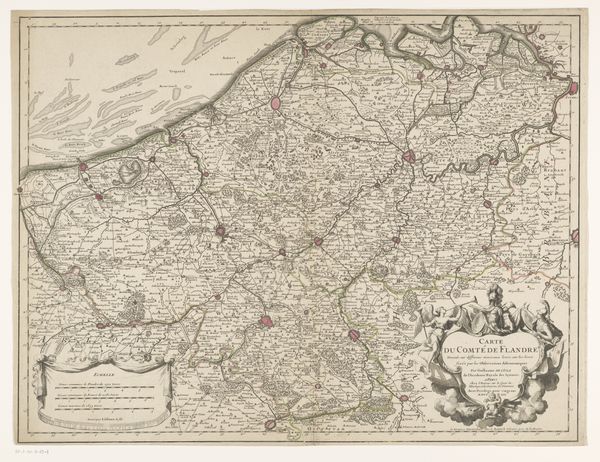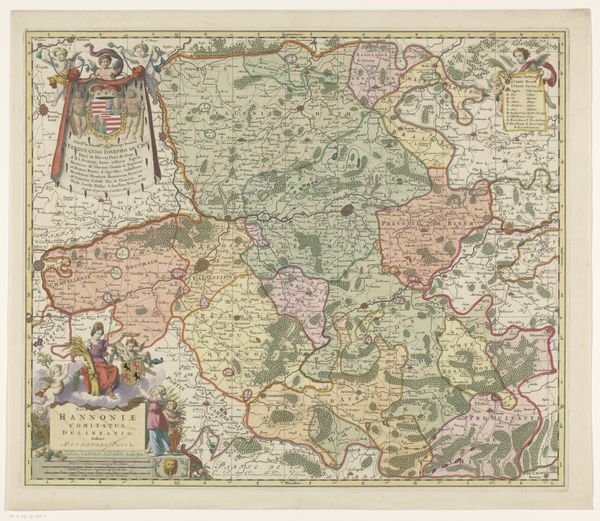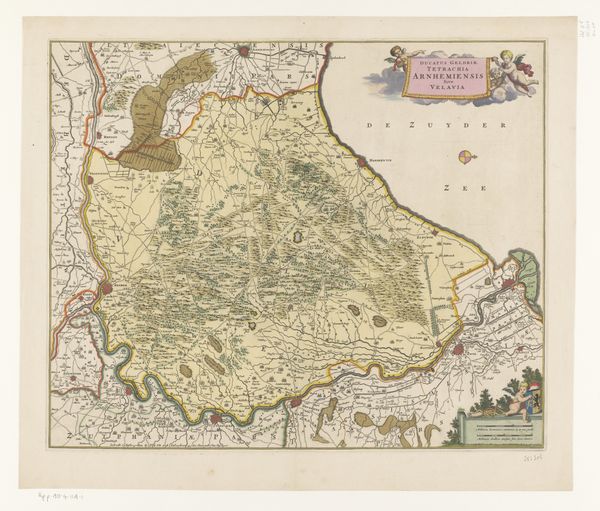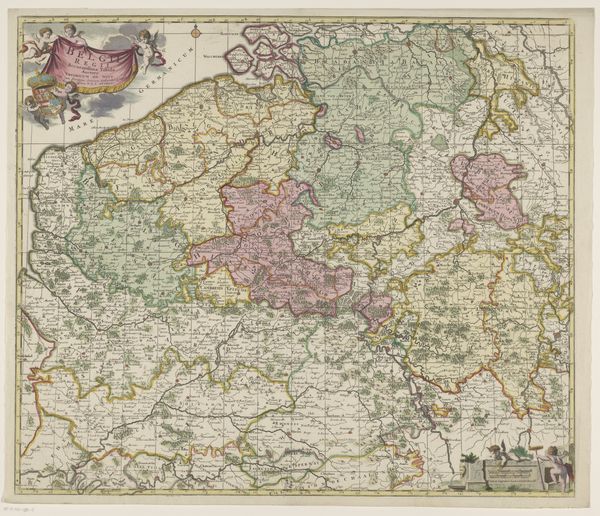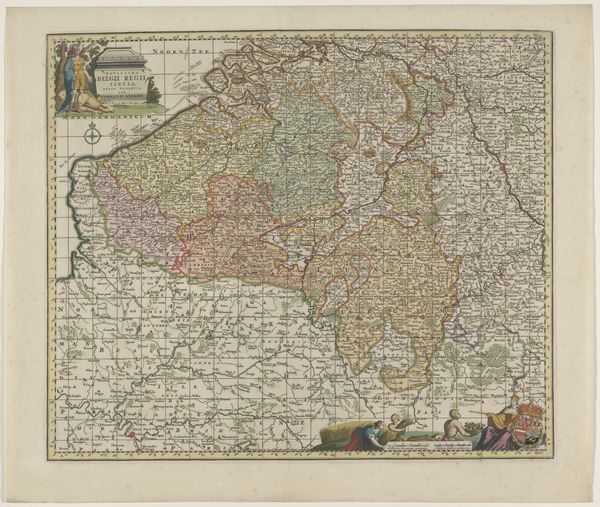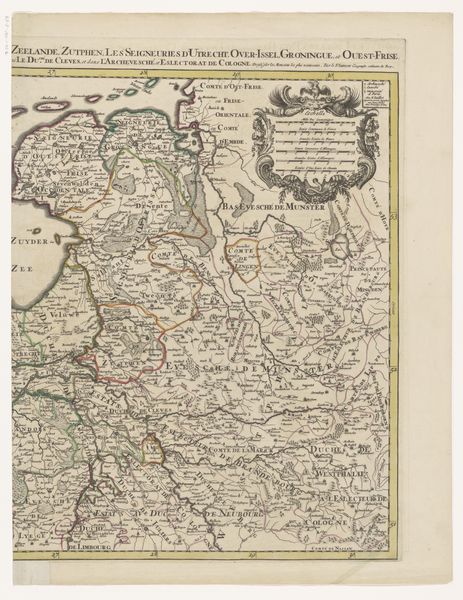
print, engraving
#
baroque
# print
#
landscape
#
cityscape
#
engraving
Dimensions: height 504 mm, width 582 mm
Copyright: Rijks Museum: Open Domain
Editor: Here we have an anonymous engraving from between 1684 and 1701, titled "Kaart van de Zuidelijke Nederlanden," or "Map of the Southern Netherlands." I’m struck by how much it blends cartography with almost allegorical imagery, with figures and a lion in the bottom corner. How do you interpret this combination of elements? Curator: This map isn't just a geographical representation, it's a statement of power and identity. Maps of this era often served a political function, defining territories and asserting claims of ownership. Look at how "Belgii Regio" is emphasized, suggesting an identity struggling to emerge amidst larger European powers. The allegorical figures reinforce this; who do they represent, and what does their presence signify for the people living in this depicted space? Editor: That’s fascinating. The figures almost seem to be guarding the map. Does the map itself reflect particular power dynamics? Curator: Absolutely. Maps were tools of control. They allowed rulers to understand and manage their territories but also to project an image of their dominion. The level of detail suggests a deep engagement with the land and its resources. Who produced these maps, and whose interests did they serve? Also, how does the representation of landscape intersect with the representation of social order and hierarchies during this period? Editor: So it’s about visualising not just land, but power itself? Curator: Precisely! The map becomes a symbol. What narratives does it reinforce, and whose voices are absent from it? Maps aren't neutral documents; they are cultural artifacts imbued with ideologies, inviting critical evaluation rather than passive acceptance. Editor: I never thought of a map having so many layers! Now I see it's a snapshot of a moment, of who held power and how they wanted to be seen. Curator: Indeed! Analyzing it further can reveal hidden assumptions and power structures inherent to that specific point in time. It becomes an archive of political thought, artistic expression, and geographic ambition, rather than a mere record.
Comments
No comments
Be the first to comment and join the conversation on the ultimate creative platform.

